Some of us grew up in a household where sewing happened frequently and so we picked up a lot of sewing knowledge without trying. Some of us first learned how to sew through scouts or a middle school Home Ec class where we may or may not have paid attention to the teacher. And some of us didn’t start sewing until now.
If sewing is still new to you here are some practices and tips for beginning any sewing project;
Measure and accept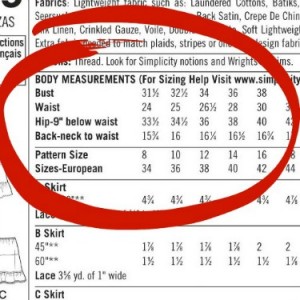
Pattern sizes are not the same as ready to wear sizes. Be ready to accept that you need to sew many sizes above what you wear from Gap. Cut the pattern size closest to your measurements (go up if in between) and just ignore the number if it bothers you. We know you look hot and we’re not asking what size you cut.
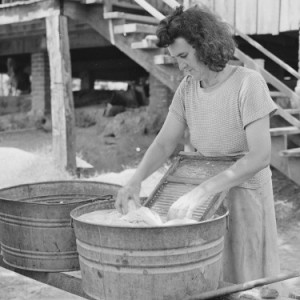 Wash your fabric before cutting
Wash your fabric before cutting
Fabric should be prewashed to remove any sizing and to relax the threads back to their natural length after having been pulled and kept so taut on the looms. If you sew first and then wash your garment will likely shrink up and pucker. Wash your fabric as you will wash the finished project. Wool? Hand wash and line dry. Cotton? Machine wash and dry. Rayon? Gentle wash and line dry. Dry clean only? A little steam from your hovering iron over laid out fabric. But always test a small area first.
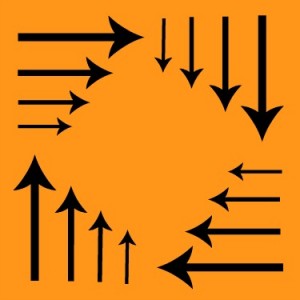 Directional arrows are there for a reason
Directional arrows are there for a reason
Lay your pattern pieces so the arrow printed on them lays in the direction the pattern manufacturer suggest. (Usually the length wise direction of the fabric for wovens and the direction of stretch for knit fabrics.) You may save a little fabric by ignoring these arrows but your garment will be doomed to ill draping.
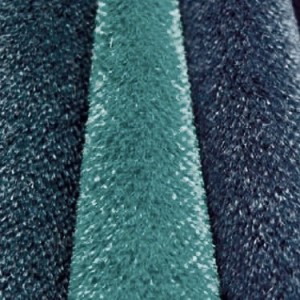 Mind the nap
Mind the nap
Fabrics may or may not have a nap. If they do you need to mind it. A nap in the fabric refers to a one way direction of the fabric. It could be a print that only goes one way or it could be a texture like fake fur, corduroy or velvet. If your fabric has a nap be sure that the top of all pattern pieces (meaning the shoulders, the waist seam, the top of a patch pocket or a sleeve cap) are pointed in the same direction on the fabric.
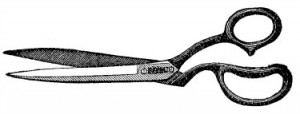 It’s important to cut correctly
It’s important to cut correctly
Cutting is the worse part of the project. Try to get the fabric at a comfortable height for you. The weight of any fabric falling over the sides of your cutting surface will cause tension in the fabric on the cutting surface. Prop up excess fabric (on a chair back or scoop up onto your cutting surface). How you cut out your pieces will impact the fit so take your time. Your fabric should lay flat on your cutting surface; no wrinkles. Press the fabric if the fiber content will allow it, steam it if you can’t press it. If using pins and scissors place pins perpendicular to the pattern edge not parallel. You could also use pattern weights and a rotary cutter but be sure to have a cutting mat beneath your fabric.
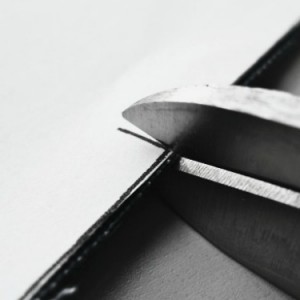 Snips rule
Snips rule
Don’t waste your time cutting a diamond shape notch either into the seam allowance or extending beyond even if it is printed on your pattern. Just snip, with the tip of your scissors, into the center of the pattern’s printed notch into the seam allowance. Of course, don’t snip deeper than the seam allowance ;-).
 Read through the pattern before you start to sew
Read through the pattern before you start to sew
You may not understand all of the steps at first but it’s good to know what lays ahead so you can prepare, whether that’s researching a technique, getting a realistic idea of how much time this will take, or sewing in an order that makes more sense to you than the pattern directions. Like cooking you may have a preferred way of “combining the oil, eggs and milk” .
 Take your time
Take your time
If you only have 30 minutes here and there then try to set up your machine in a place you can keep it up until the project is done. If you have a big chunk of time every morning then aim for getting a few steps done before you have to stop but never rush your project. Rushing can be stressful and can lead to dumb mistakes which will make the project take even more time. Slow and steady really does win the race when it comes to sewing. (Granted, I have worked with super, fast seamstresses but they had years of practice to become speedy and accurate and some were, by nature or caffeine intake, high energy)

